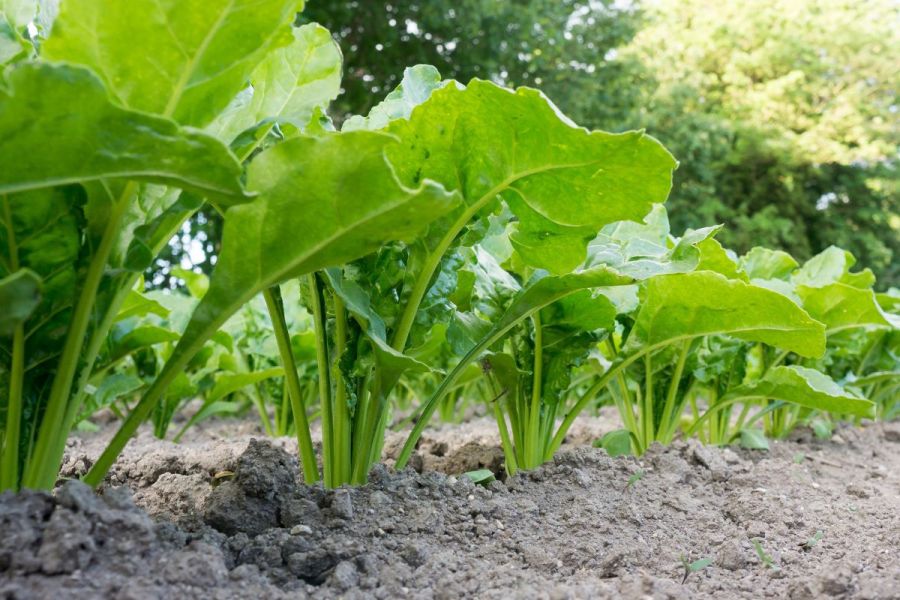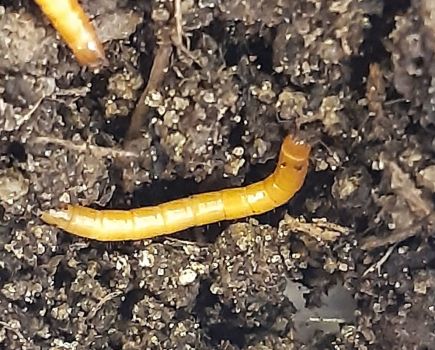Sugar beet researchers from across Europe and USA convened in Brussels recently to discuss the latest research on key topics for the crop. CPM joined delegates at the IIRB congress to find out more.
“This is the first scientifically described resistance mechanism against a member of the virus yellows disease complex.”
By Mike Abram
Virus yellows, cercospora, emerging disease threats such as syndrome basses richesses (SBR) and rubbery taproot disease, the loss of herbicide actives and the drive for alternative weed control, and understanding the carbon footprint of growing the crop – there are no shortage of challenges for the sugar beet industry.
The latest work in all of those areas was presented by researchers at the 79th International Institute of Sugar Beet Research (IIRB) congress in Brussels.
No fewer than 26 presentations and posters covered various aspects of virus yellows – highlighting the growing impact of the disease on sugar beet across Europe following the ban on neonicotinoid seed treatments – notwithstanding the derogation granted to UK growers for the coming season.
This included new research on mature plant resistance to virus yellows by Sharella Schop, a PhD student at Wageningen University in work co-sponsored by the BBRO. Mature plant resistance is a mechanism against aphids in sugar beet, she explained, that causes aphids to have a higher mortality when they feed on older plants.
It’s been known for some years that black stomach deposits occur in these aphids, causing the pest to die within 24-36 hours. “So the black stomach deposit or something related to it is very deadly, and we think the deposit can give an indication of what’s leading to mature plant resistance,” she said.
Sharella’s research has found that there are different levels of susceptibility to mature plant resistance and the formation of black stomach deposits, with the potato aphid (Macrosiphum euphorbiae) more susceptible than the peach-potato aphid (Myzus persicae), while the black bean aphid (Aphis fabae) is less susceptible.
“In the end, all of the aphids will die, but it might be that the black bean aphid can detoxify the toxic compound produced by sugar beet to a certain level, but when it accumulates too much, the aphid will die,” suggested Sharella.
Sugar beet varieties also differ in the level of mature plant resistance they exhibit but this isn’t consistent in experiments, she said, with a variety showing high levels of resistance in the lab not necessarily exhibiting high levels in field trials.
“This suggests there isn’t one specific resistance gene involved. We think environmental factors play an important role, affecting the physiological state of the plant. That could make it more difficult for plant breeders to use this mechanism.”
Another finding is that a virus is able to inhibit mature plant resistance. “When a plant is infected by a yellowing virus, you observe lower mature plant resistance. More aphids survive and with more aphids comes more virus spread, so the virus is able to promote its own spread.”
Further research reveals that beet yellows virus leads to the highest reduction in mature plant resistance. “On these plants, more aphids survive, and fewer black stomach deposits are formed.”
Sharella’s hypothesis is that the black stomach deposits are formed in a reaction similar to that of apples or avocados turning brown when cut. After dissecting aphid stomachs and adding a chemical involved in enzymatic browning, di-phenol, she’s able to demonstrate the reaction which creates the black stomach deposit.
“We think the aphid takes up both the enzyme and mono-phenols or di-phenols that are turned into the black stomach deposits while feeding on the sugar beet plants,” said Sharella.
Analysis of plant leaves exhibiting mature plant resistance has found high levels of both phenols and another compound, flavonoids, so there seems to be a correlation, she suggested, but more research is required to better understand the pathway.
However, the research may provide some hope that mature plant resistance could be induced earlier in sugar beet plants through breeding, she concluded, while other solutions such as earlier sowing could also be bred for.
“Nutrition may be important for helping to mature plants earlier in the growing season – we observed in a trial that mature plant resistance was much higher in plants we fed with nutrients early in the season than when we didn’t give any nutrients.”
Another PhD student, Lukas Rollwage from the Institute of Sugar Beet Research (IfZ) in Germany, presented ground-breaking research conducted in conjunction with SESVanderhave about a potential future resistance mechanism for virus yellows known as recessive resistance.
Both poleroviruses – beet mild yellowing virus (BMYV) and beet chlorosis virus (BChV), and the potyvirus beet mosaic virus (BtMV), carry a protein called a viral protein genome linked (VPg), which unlocks susceptibility in the beet plant and allows the virus to reproduce and spread.
The research has identified the ‘lock’ in the plant which causes susceptibility, and by using gene editing to interfere with that interaction, has shown that, at least in BChV, it’s possible to stop the virus from replicating in the plant, explained Lukas.
“This is the first scientifically described resistance mechanism against a member of the virus yellows disease complex,” he said. “This knowledge can be used in the future for breeding purposes to identify natural resistance genes.”
While there seemed little consensus on which of the virus yellows strains predominated in different parts of Europe from various surveys, there was agreement that sugar beet varieties would have to cope with them all.
For example, monitoring by DLF across Europe and BBRO in the UK highlights that mixed infections of virus yellows types are common, with BChV often present. While more recent monitoring by KWS in 2023 suggests BYV is the dominant strain in the UK, taking over from BChV.
Progress is being made towards more tolerant and resistant varieties, according to various presentations by breeders. Data from DLF suggests it’s reduced the yield gap by 10% in one generation in its VYTech varieties, while in Germany, Strube has launched ST Yellowstone which it claims has high sugar yield equivalent to the best commercial varieties in the absence on infection, with high BMYV and BYV tolerance.
Unfortunately, its bolting weakness makes it unlikely to be sold in the UK, said the firm’s Richard Cogman.
Other research looks at alternative methods of controlling virus yellows. In Germany, Benedict Wieters from IfZ is looking at the potential to encourage biological control of aphids by beneficial insects through growing overwintered flowering strips in or around sugar beet fields.
Ladybird adults and larvae can potentially eat 20-120 aphids/day, lacewing larvae 20-180 aphids/day, and hoverfly larvae 70-100 aphids/day, he said.
Flowering strips provide floral resources for adults migrating into fields and are good overwintering sites, explained Benedict. This theory was tested at two sites where the flowering strips were established the year previous to the sugar beet crop, with the aim of providing early flowering to promote beneficial insects in time to reduce virus transmission.
Six-metre-wide strips were successfully established between tramlines of the crop, and while a mix of species was sown, corn flowers dominated, said Benedict.
Analysis from trap data is still ongoing, but initial results suggest that in the first weeks of the growing season, generalist predators such as ground and rove beetles are found, while later in the season ladybirds and other aphid predators are seen.
While there’s evidence that flowering strips reduce aphid populations compared with the control crop with no flowering strip or insecticide applied, the key metric is the impact on virus yellows and yield, he noted.
“With insecticide application we had no yellowing, while with flowering strips we had a 30% reduction in yellowing compared with the no insecticide control.”
Sugar beet yield didn’t benefit from the flowering strips over the untreated control, however, both showed a 3-4% yield loss compared with the insecticide treated.
“There are advantages to using flowering strips, from public perception to increasing biodiversity at ecosystems level, as well as aphid and other pest reductions. But there are disadvantages – it’s a high effort system and high cost as you lose land from production, while it seems to be a little bit of a time-delayed effect, and in these trials, for no yield benefit,” he summarised.
Another alternative technique tested across 25 trials in Belgium, Netherlands, Germany and Denmark is the use of a barley companion crop, sown just before beet drilling.
This shows some promise with Myzus persicae and black bean aphid numbers reduced where the barley was grown, and the threshold for treatment in those plots exceeded many fewer times than where beet alone was grown, explained Chloe Dufrane from Belgian sugar beet research institute IRBAB.
Virus yellows infections in the barley plots was also much reduced as was other pest pressure, but beet yield could be impacted through competition with the barley, she said. “Sugar beet yield loss increases with barley ground cover. This means a difficult balance between having enough barley ground cover to disguise the beet from aphid attacks, termination date to minimise yield loss, expected yield loss due to virus yellows and cost of increased management efforts,” explained Chloe.
This article was taken from the latest issue of CPM. Read the article in full here.
For more articles like this, subscribe here.
Sign up for Crop Production Magazine’s FREE e-newsletter here.




